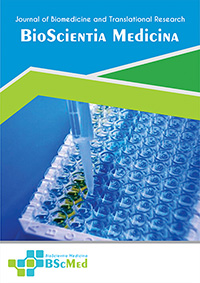Main Article Content
Abstract
Background: Atherosclerosis remains a leading cause of mortality in aging populations, driven by a complex interplay of metabolic and inflammatory factors. While dyslipidemia is a cornerstone of risk, the contributions of systemic inflammation, marked by high-sensitivity C-reactive protein (hsCRP), and declining renal function are increasingly recognized. This study aimed to elucidate the independent associations of hsCRP, dyslipidemia, and renal function with the presence of carotid atherosclerosis in an understudied elderly Indonesian population.
Methods: We conducted a single-center, case-control study at a tertiary hospital in Palembang, Indonesia, from January to June 2024. One hundred participants aged ≥60 years were enrolled from the geriatric outpatient clinic. Cases were defined by the presence of carotid plaque, identified via B-mode Doppler ultrasound, and defined according to international consensus criteria. Controls had no evidence of plaque. We performed multivariate logistic regression to identify independent predictors of atherosclerosis, including hsCRP, lipid parameters, and estimated glomerular filtration rate (eGFR).
Results: After multivariable adjustment, three factors emerged as significant, independent predictors of carotid atherosclerosis. High total cholesterol (≥200 mg/dL) was the most powerful predictor, associated with a more than seven-fold increased odds of plaque (Adjusted Odds Ratio [aOR]: 7.38; 95% Confidence Interval [CI]: 2.87–18.94; p<0.001). Elevated hsCRP (≥2 mg/L) (aOR: 3.38; 95% CI: 1.33–8.59; p=0.005) and abnormal eGFR (≤90 mL/min/1.73m²) (aOR: 3.36; 95% CI: 1.10–10.22; p<0.001) were also robustly associated with atherosclerosis, each conferring over a three-fold increase in odds.
Conclusion: In this elderly Indonesian study, dyslipidemia remains a dominant risk factor for carotid atherosclerosis. However, systemic inflammation (high hsCRP) and mild renal dysfunction (abnormal eGFR) are also powerful, independent contributors. These findings highlight the multifactorial nature of atherosclerosis and underscore the importance of a comprehensive risk assessment that extends beyond traditional lipid profiling to include markers of inflammation and renal health.
Keywords
Article Details
As our aim is to disseminate original research article, hence the publishing right is a necessary one. The publishing right is needed in order to reach the agreement between the author and publisher. As the journal is fully open access, the authors will sign an exclusive license agreement.
The authors have the right to:
- Share their article in the same ways permitted to third parties under the relevant user license.
- Retain copyright, patent, trademark and other intellectual property rights including research data.
- Proper attribution and credit for the published work.
For the open access article, the publisher is granted to the following right.
- The non-exclusive right to publish the article and grant right to others.
- For the published article, the publisher applied for the Creative Commons Attribution-NonCommercial-ShareAlike 4.0 International License.





